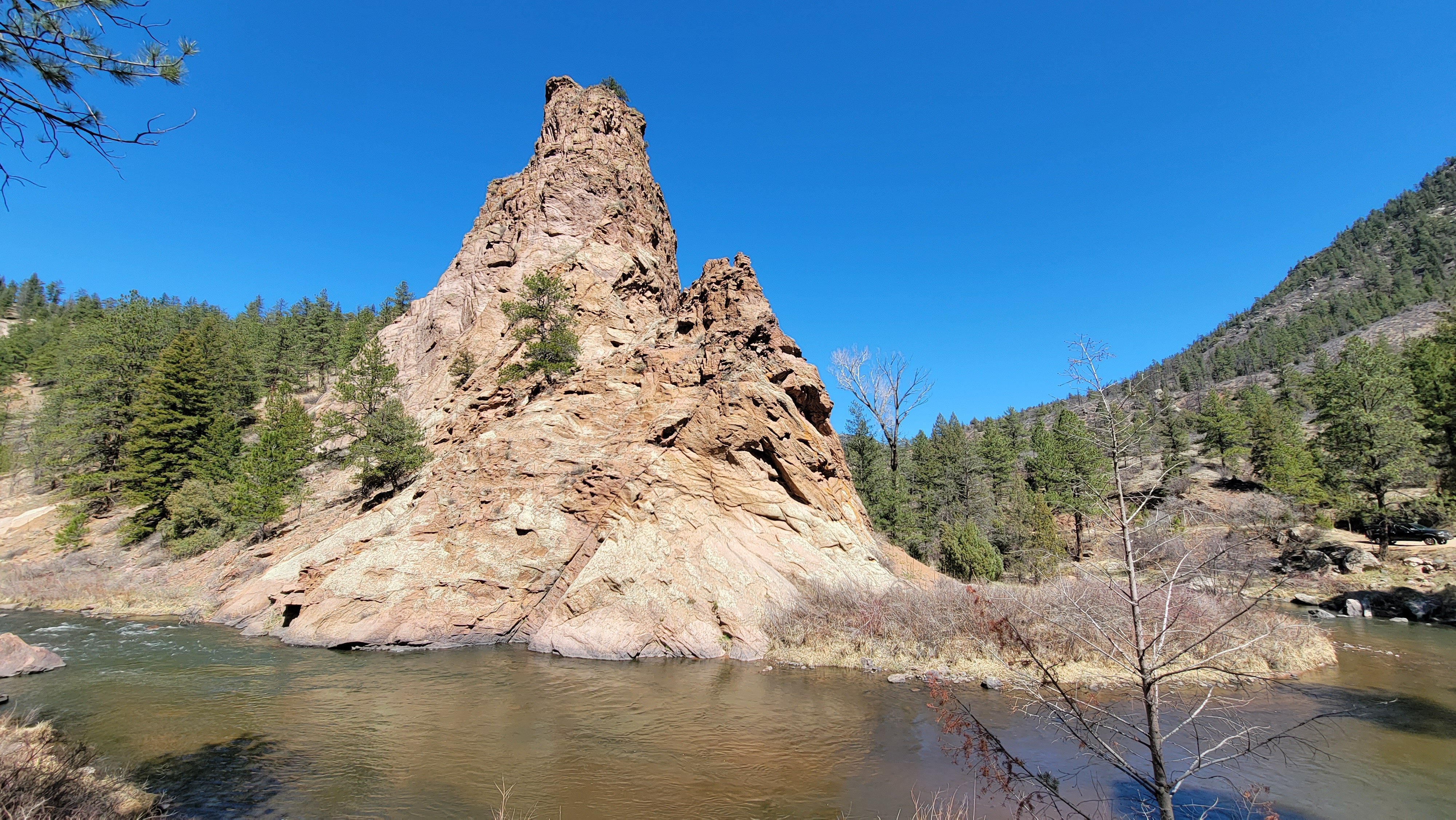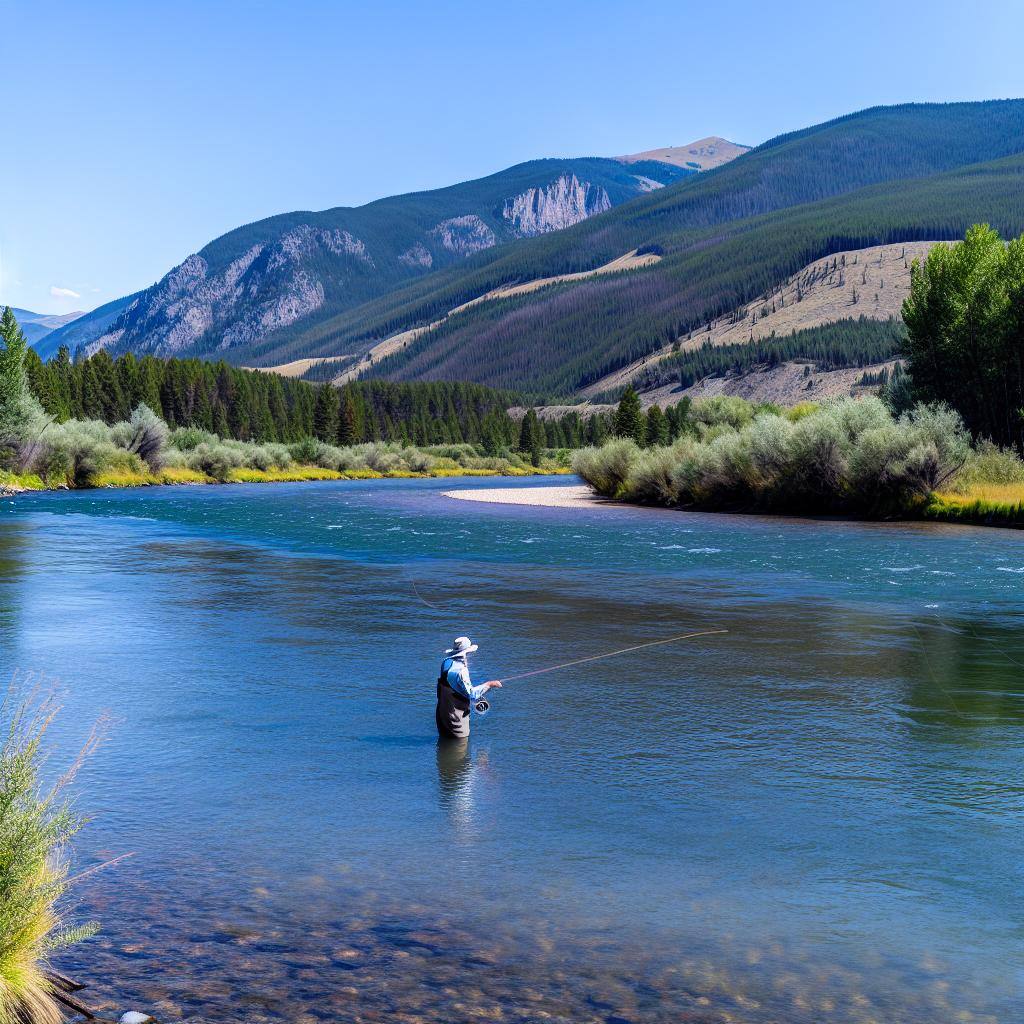If you're planning a fishing trip to the Blue River in Colorado during the spring season, knowing which flies are most effective for catching fish is important. The Blue River is known for its abundance of trout, making it a popular spot for fly fishing enthusiasts. Some top flies to use during the spring include nymphs such as stoneflies, mayflies, and caddisflies. Additionally, dry flies like blue-winged olives and midges can also be effective. It's always a good idea to do some research and talk to local experts to better understand what flies are working well in the area. Happy fishing!
Understanding the Blue River

When exploring the Blue River in Colorado, anglers are met with a serene and picturesque setting that beckons them to cast their lines and test their skills against the river's prized inhabitants. The cold, crystal-clear waters of the Blue River play host to a diverse array of trout species, with rainbow trout taking center stage as the most abundant and colorful residents. Their acrobatic displays and vibrant hues make them a favorite among anglers seeking an exciting battle on the other end of their line.
For those willing to embrace the challenge, the elusive brown trout lurks beneath the surface, requiring a stealthy approach and precise presentation of flies to entice a strike. Known for their aggressive nature and impressive size, landing a brown trout in the Blue River is a feat that promises a sense of accomplishment and admiration for these majestic fish. And let's not forget the native cutthroat trout, with their distinct red-orange slash marks under their jaw, adding a touch of history and heritage to the river's ecosystem.
To truly unlock the secrets of successful fishing on the Blue River, it is essential to delve into the nuances of each trout species' behavior and habitat preferences. By understanding what drives these fish to feed and how they interact with their environment, anglers can tailor their approach and fly selection to mirror the natural food sources in the river. This level of insight and attention to detail sets the stage for a fulfilling and rewarding fishing experience, where each cast holds the promise of a thrilling encounter with these prized trout species.
Considerations for Fly Selection
.png?width=600&height=600&name=Untitled%20(2%20x%202%20in).png)
When selecting flies for Blue River fishing in the spring, there are several key factors to consider:
- Seasonal insect hatches: Spring is a time of increased insect activity in the Blue River. Pay attention to the insect hatches during this time and select flies that imitate the insects in the river. Common spring hatches include midges, blue-winged olives, and caddisflies.
- Water clarity: The Blue River is known for its clear water, especially in the spring when snowmelt contributes to higher water flow. Choose flies that match the clarity of the water. Natural and realistic patterns are more effective in clear water, while brighter and attractor patterns can work well in slightly stained water.
- Fly size and profile: Matching the size and profile of the natural food sources is important for enticing trout to bite. Pay attention to the size of the insects hatching and choose flies accordingly. Additionally, consider the profile of the flies and select patterns that closely resemble the shape and silhouette of the natural prey.
- Fishing techniques: Different fishing techniques require different fly patterns. Suppose you plan to fish with dry flies, select patterns that float well, and imitate the insects on the water's surface. For nymph fishing, choose patterns that sink quickly and imitate the nymph stage of aquatic insects. On the other hand, streamer fishing requires larger and more colorful patterns that imitate small baitfish or leeches.
Top dry flies for Blue River fishing in Spring
Dry fly fishing is popular on the Blue River, especially during insect hatches. Anglers can experience the thrill of watching trout rise to the surface to take their fly, creating an exhilarating and visual fishing experience. The delicate presentation of dry flies mimicking natural insects on the water's surface requires skill and precision, making it a rewarding challenge for fly fishermen of all levels. Additionally, dry fly fishing allows anglers to target specific rising fish and observe their behavior, adding an element of strategy and observation to the fishing process. This technique is effective and provides a unique and immersive connection to the river and its inhabitants, making it a favorite among fly fishing enthusiasts on the Blue River.
Here are some top dry flies to use for Blue River fishing in the spring:
Parachute Adams
This versatile pattern imitates many mayflies and is highly effective during blue-winged olive hatches. Buy it here
Elk Hair Caddis
Caddisflies are abundant in the Blue River, and the Elk Hair Caddis is a go-to pattern for imitating these insects. It floats well and can be fished in various sizes and colors. Buy it here
Griffith's Gnat
When midges are hatching, the Griffith's Gnat is a must-have fly. It imitates midge clusters and is effective in smaller sizes. Buy it here
Blue Wing Olive Comparadun: This pattern imitates the blue-winged olive mayfly, a common spring hatch. It sits low in the water and closely resembles a natural insect. Buy it here
These are just a few examples of the top dry fly for Blue River spring fishing. Make sure to have a variety of sizes and patterns to match the specific hatches happening during your fishing trip.
Effective nymph patterns for targeting trout
Prince Nymph
This classic pattern imitates a variety of mayfly nymphs and works well in the Blue River. It can be fished in various sizes and weighted to reach the desired depth. Available from us here.
Hare's Ear Nymph
Another versatile pattern, the Hare's Ear imitates both mayfly and caddisfly nymphs. It has a buggy appearance that trout find irresistible. Available from us here.
Copper John
The Copper John is a popular attractor nymph pattern that works well in the Blue River. Its shiny copper body and bead head attract the trout's attention and induce strikes. Available from us here.
Zebra Midge
When midges are hatching, the Zebra Midge is a go-to pattern. It is simple yet effective and can be fished in various colors and sizes. Available from us here.
These nymph patterns are just a starting point. Experiment with different sizes, colors, and weights to find what works best on the Blue River during spring.
The best streamer flies to entice aggressive strikes.
Streamer fishing can be highly effective for targeting aggressive trout in the Blue River. Here are some of the best streamer flies to use:
- Woolly Bugger: The Woolly Bugger is a versatile streamer pattern that imitates a variety of baitfish and leeches. It can be fished in different colors and sizes to match the prey in the Blue River.
- Sculpzilla: This streamer pattern imitates sculpins, a common food source for trout in the Blue River. It has a realistic profile and movement that triggers aggressive strikes.
- Sex Dungeon: The Sex Dungeon is a large and flashy streamer pattern that can entice big trout to strike. It imitates larger baitfish and is effective when targeting trophy-sized fish.
- Double Bunny: This streamer pattern has a double-layered bunny strip that creates a lifelike movement in the water. It imitates wounded baitfish and can provoke aggressive strikes from trout.
Streamer fishing requires an active and aggressive retrieve to imitate the movement of prey. Vary your retrieve speed and depth to find what triggers the most strikes from trout in the Blue River.
.png?width=300&height=100&name=Copy%20of%20Rise%20Beyond%20Logo%2012.31.24%20(300%20x%20100%20px).png)
.png)




.png)

